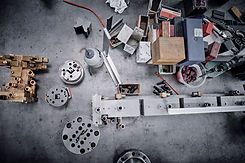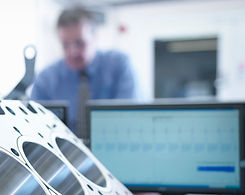YOUR PARTNER
IN PRECISION TOOLMAKING
TOOLING EXCELLENCE.
PRODUCT PRECISION.
 |  |  |
|---|---|---|
 |  |  |
 |  |  |
 |  |
OUR TOOL AND DIE GALLERY CONTAINS OVER 3,000 DEVELOPED SOLUTIONS.
CONTINUOUS MAINTENANCE ENSURES THE OPERATIONAL CAPABILITY OF THE TOOLS DURING THE ENTIRE PRODUCT LIFE CYCLE.
TOOL DEVELOPMENT STEP BY STEP
PRECISE I COST EFFICIENT
1
REQUIREMENTS ANALYSIS
-
Profile drawing: Provide a technical drawing of the desired plastic profile (including cross-section, dimensions, and tolerances). Alternatively, we are happy to assist in developing the drawing in collaboration with you!
-
Material selection: Selection of the appropriate plastic material is crucial, as flow characteristics have a direct impact on tool and die design.
-
Production requirements: Definition of key production parameters, including extrusion speed, output volume, wall thicknesses, functional tolerances, operating conditions, and any co-extrusion specifications.

2
CONCEPT DEVELOPMENT
-
Profile analysis: Examination of the profile geometry to evaluate flow conditions and optimize wall thickness distribution.
-
Tool design:
-
Die (shaping unit): Forms the molten plastic into the required cross-sectional shape.
-
Calibration unit: Stabilizes the profile geometry and ensures efficient cooling.
-
Process unit (e.g. die head, adapter, heating/cooling systems): Regulates melt flow, pressure distribution, and temperature control throughout the extrusion process.
-

3
CONSTRUCTION
-
3D CAD model: Creation of a detailed 3D CAD model of the die, calibration unit, and—if required—additional components such as co-extrusion units, water tanks, or vacuum systems.
-
Flow simulation (optional): Computational Fluid Dynamics (CFD) analysis to optimize melt flow and prevent defects such as shear lines, warpage, or air entrapment.
-
Thermal Analysis: Evaluation of thermal distribution to ensure consistent and uniform temperature across the melt throughout the extrusion process.

4
TOOL MANUFACTURING
-
Material Selection: Tool components are typically manufactured from high-quality tool steels (e.g., 1.2311, 1.2312) or hardened stainless steel, selected for their durability and precision machining characteristics.
-
Manufacturing steps as the tool is produced in several precise steps:
-
CNC milling, turning, erosion (wire erosion for fine contours),
-
Grinding, polishing (internal flow channels often mirror-polished),
-
Final assembly of all tool elements to ensure dimensional accuracy and reliable performance
-

5
COMMISSIONING
-
Initial extrusion to evaluate the profile’s dimensional accuracy, surface quality, and material behavior under real production conditions.
-
Fine-tuning: Targeted mechanical adjustments, including die modifications (e.g., flow channel corrections), calibration unit optimization, and precise adjustment of heating and cooling zones.
-
Documentation: Comprehensive documentation of process parameters, tool drawings, and maintenance guidelines to ensure consistent reproducibility.
-
Continuous monitoring of production output using state-of-the-art measurement and inspection technologies.

CONSULTATION & QUOTATION
Let us find the right solution for your application – customized to your requirements.